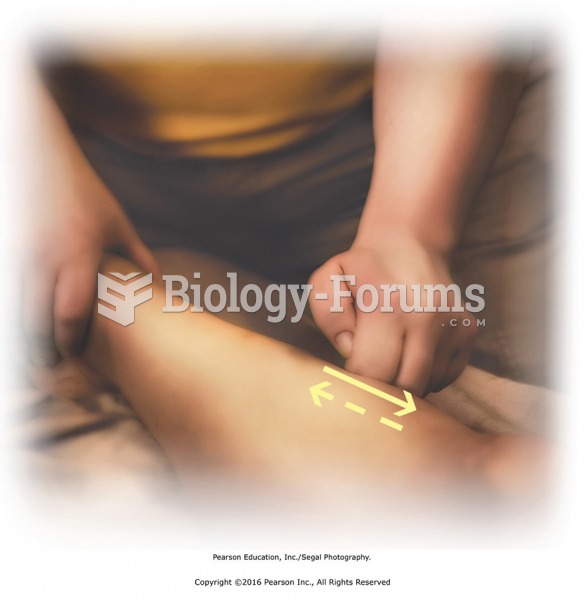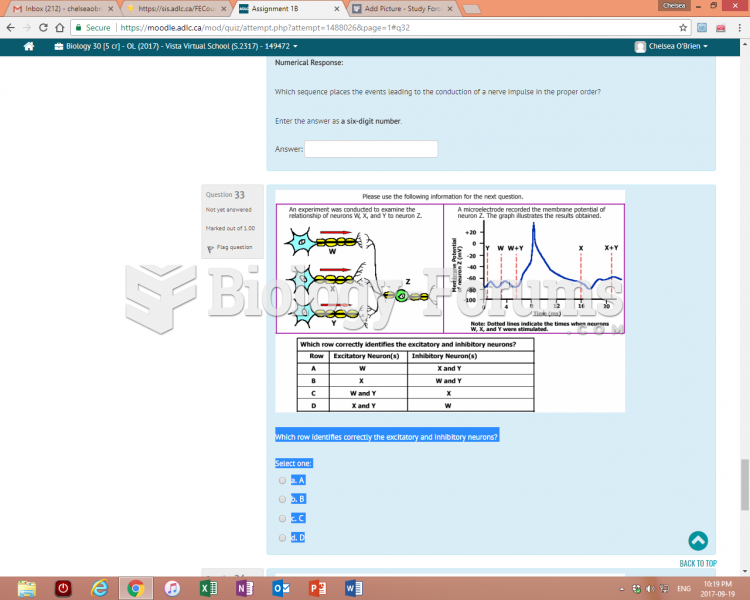|
|
|
The first-known contraceptive was crocodile dung, used in Egypt in 2000 BC. Condoms were also reportedly used, made of animal bladders or intestines.
The senior population grows every year. Seniors older than 65 years of age now comprise more than 13% of the total population. However, women outlive men. In the 85-and-over age group, there are only 45 men to every 100 women.
During pregnancy, a woman is more likely to experience bleeding gums and nosebleeds caused by hormonal changes that increase blood flow to the mouth and nose.
According to the American College of Allergy, Asthma & Immunology, more than 50 million Americans have some kind of food allergy. Food allergies affect between 4 and 6% of children, and 4% of adults, according to the CDC. The most common food allergies include shellfish, peanuts, walnuts, fish, eggs, milk, and soy.
Many of the drugs used by neuroscientists are derived from toxic plants and venomous animals (such as snakes, spiders, snails, and puffer fish).
 Finish with effleurage and passive touch. Apply effleurage to both sides simultaneously, starting at ...
Finish with effleurage and passive touch. Apply effleurage to both sides simultaneously, starting at ...
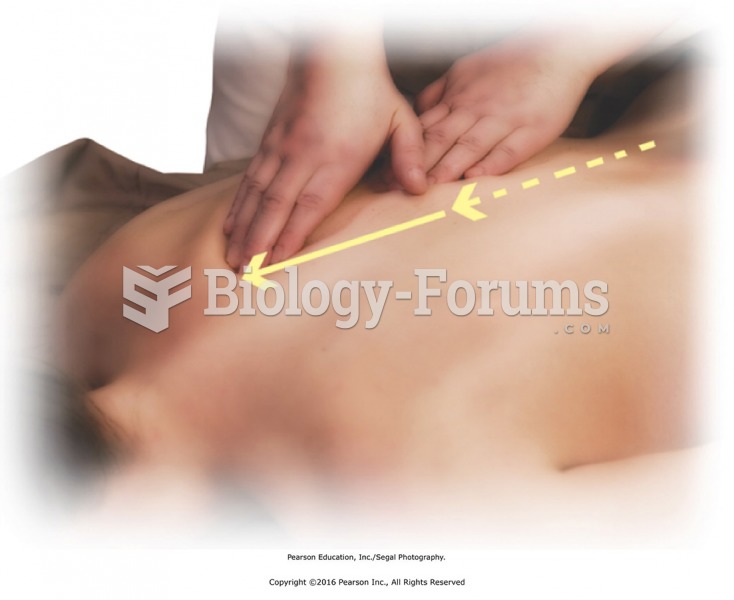 Standing at the side and facing the head, apply shingles effleurage to paraspinal muscles of the ...
Standing at the side and facing the head, apply shingles effleurage to paraspinal muscles of the ...
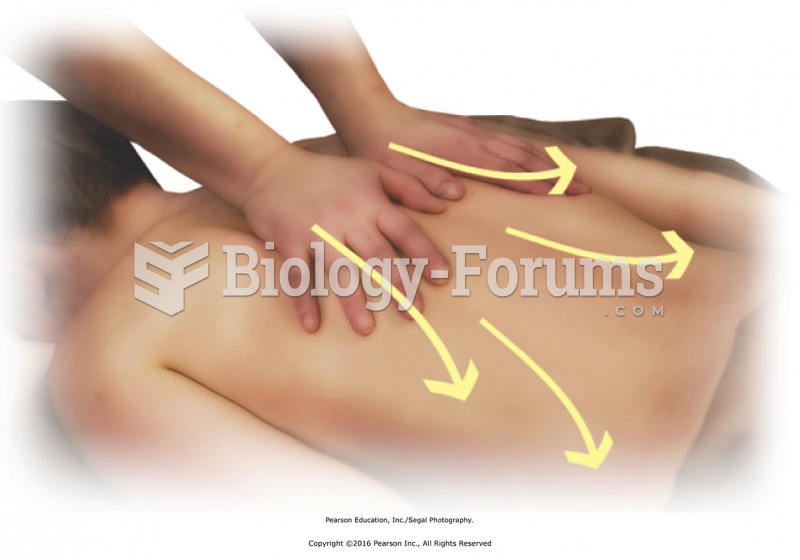 Standing at the head of the table, apply oil or lotion to the entire back with bilateral stroking. ...
Standing at the head of the table, apply oil or lotion to the entire back with bilateral stroking. ...
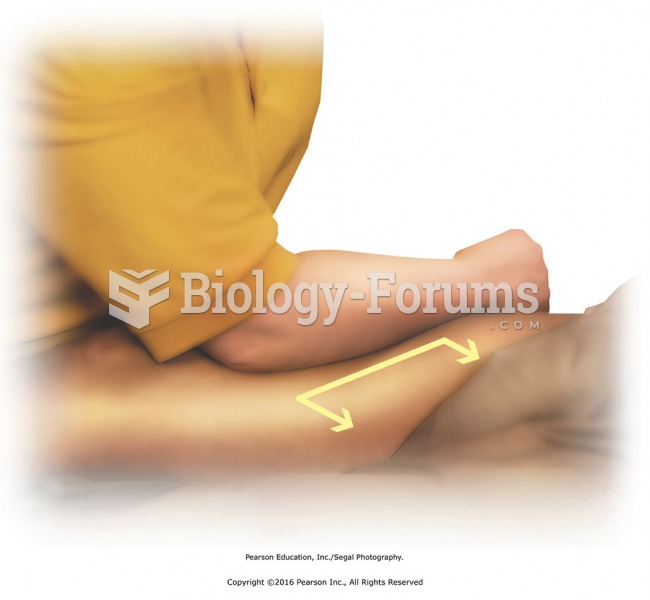 Straighten the leg and effleurage to quadriceps with forearm. Apply in three parallel strokes from ...
Straighten the leg and effleurage to quadriceps with forearm. Apply in three parallel strokes from ...


